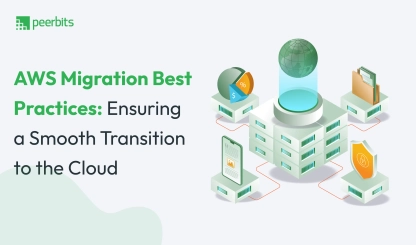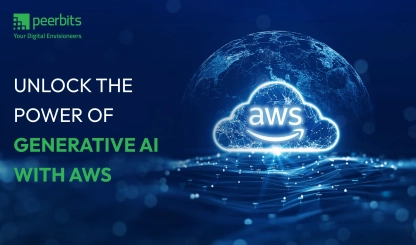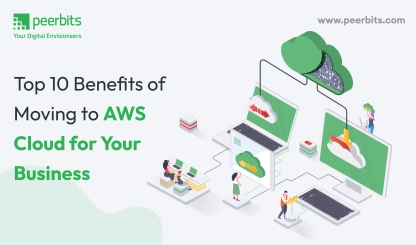Long gone are the days of stocking up physical servers for managing large volumes of data. The IT sector has been revolutionized by the advent of cloud computing. Now cloud single-handedly offers a variety of benefits including scalability, agility and reduced cost by paying only for what the business’s infrastructure utilizes.
This modernisation brings another spike of transformation through cloud-native development. It has brought a whole new twist to the potential of cloud usage. Even a report by Gartner estimated that over 95% of new digital workloads will be deployed on cloud-native platforms by 2025.
Therefore, if you are also planning to adopt cloud-native applications or confused whether cloud migration or cloud native development will suit your business, then you’ll find everything of use here.
In this blog, you’ll find all about cloud native development services, including its meaning, core components, benefits, challenges, best practices, case studies, future trends and more to give you a detailed insight.
Let’s begin with the definition first.
What is cloud native development?
Cloud-native development is a phenomenal approach with which developers can build, deploy and manage software applications on the cloud. Here you don’t just take your existing apps or infrastructure to the cloud instead, applications are built exclusively for cloud-native environments from scratch.
Further, companies can choose from public, private, or hybrid clouds to build and deploy their applications. Since these applications are natively built for the cloud platform, they can take advantage of of the underlying infrastructure and processes. These are modern applications that are highly scalable, easy to modify, and can be quickly updated.
Core components of cloud-native development
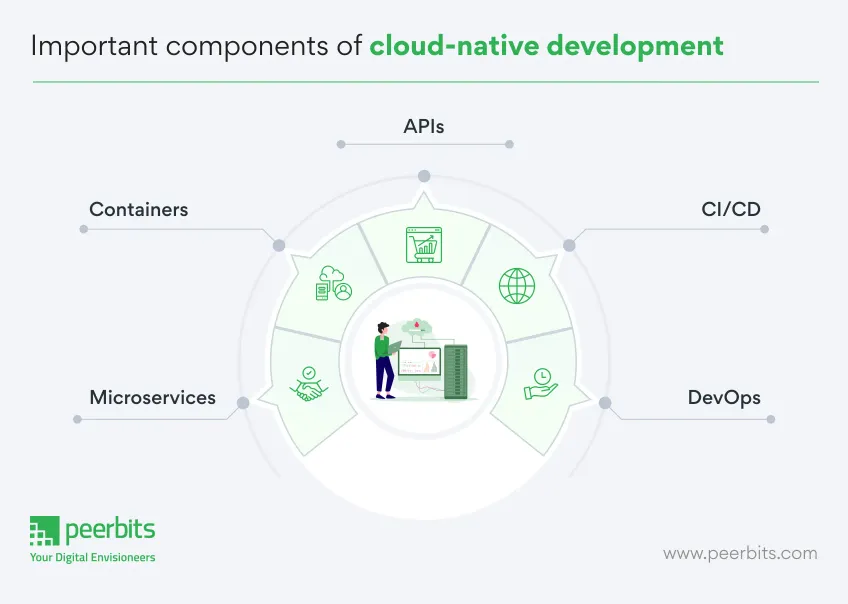
Cloud-native development focuses on building applications that fully utilizes cloud computing's potential. Here are four major components of cloud-native that you should know:
1. Microservices
Cloud-native applications are broken into smaller independent components known as microservices. These microservices have separate functioning and communicate with each other via APIs.
Since microservices work with containerization, that's why every component can be updated easily without affecting the other. In fact it also prevents the whole system from falling down in case of a minor disruption in a single microservice. It leads to resilient and manageable app development that developers love to work with.
2. Containers
Containers are an important cloud-native application component that mixes code and its dependencies into a single package. This package created with the help of containerization, allow apps to can easily function in different environments.
A single container management/orchestration system manages all the components of a cloud native application. Container management systems like Kubernetes and Amazon ECS are some of the popular systems used that help in easily deploying, managing, and scaling your containerized applications.
3. API
API, aka Application Programming Interface is a medium for communication between two or more software systems. APIs is how the talking happens between microservices that are loosely coupled with each other.
Microservices request data with APIs and provide output through APIs. Such an architecture is super lightweight, simple, and quick for developers & consumers they are made for. It also consumes very fewer resources as compared to monolithic applications.
4. CI/CD pipelines
Cloud-native development breathes on a Continuous Integration and Continuous Deployment pipeline. This workflow is important for a collaborative and iterative approach for DevOps teams to build, test, and deploy applications.
Developers are able to access anything they require for development from a centralized repository for coding. On top of that, automation is also used in the CI/CD pipeline to compile, build, and test the application code. This speeds up the development and reduces chances of human error.
5. DevOps
DevOps is also an integral part of cloud-native development. To lead the app development with an agile approach, DevOps principles are the most necessary elements in any developer’s arsenal. DevOps help the development and operations teams to work together onto the automation of workflows. Such pipeline yield software applications more quickly and reliably.
Adopting cloud-native practices

Adopting cloud-native practices requires careful planning and execution. That’s why transitioning from legacy systems to cloud-native approaches involves several solid strategies. Here are a few essential tips to adopt cloud-native application development:
-
Assessing existing infrastructure and identifying applications that would benefit most from cloud-native environments.
-
Gradually, refactoring or rearchitecting these applications into microservices that help facilitate the transition.
-
Significant cultural and organizational shifts are necessary apart from technical changes.
-
Focusing on DevOps culture that emphasizes collaboration between development and operations teams is a must to consider.
-
Embracing agile methodologies and continuous learning.
Choosing the right cloud platform
Surely, a good cloud provider can bring a huge difference in your expenses & ease of dealing with cloud-related services. For that, it's essential to evaluate major providers like AWS, Azure, and Google Cloud based on factors including:
-
Scalability,
-
Pricing, and
-
Support for cloud-native tools.
Each platform offers unique features and services that cater to different needs. So figure out your needs first then its a smoother road from there onwards!
Building cloud-native teams
Building cloud-native teams is another critical step in the process of cloud-native development adoption. These teams should be well-versed & skilled in:
-
Microservices architecture,
-
Containerization, and
-
CI/CD pipelines.
Collaboration between development and operations teams is key. It makes sure that the lifecycle of the application, from development to deployment, is seamless and efficient. Along with that, investing in ongoing training and promoting a culture of innovation can significantly enhance the effectiveness of cloud-native development.
Benefits of cloud-native development
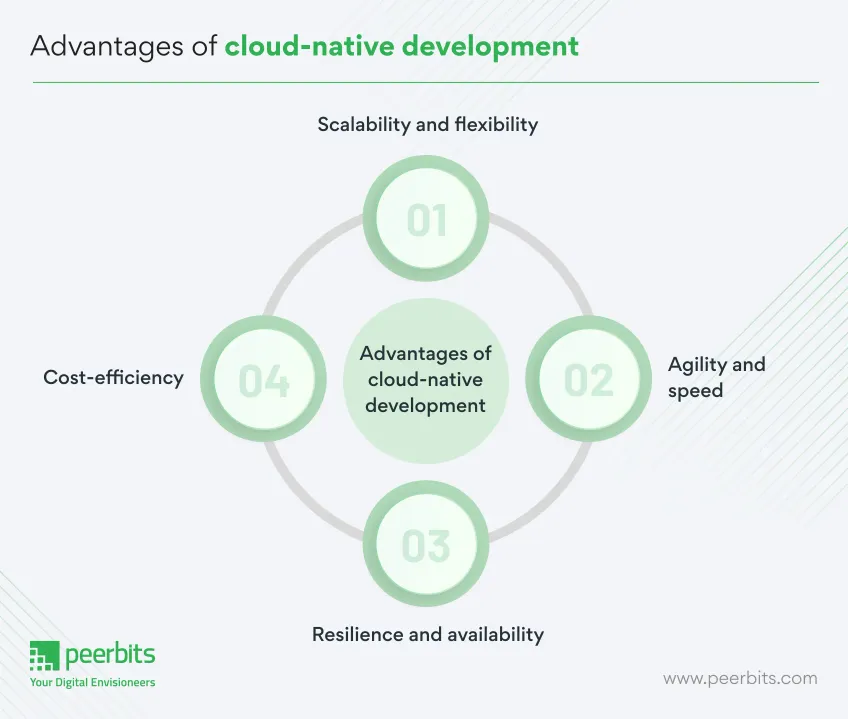
Cloud-native development offers numerous benefits that significantly enhance application performance and business operations, as follows:
1. Scalability and flexibility: Cloud-native applications can dynamically scale resources with the changing demands in the market. This allows for optimal performance during peak times without over-provisioning. Whereas this flexibility also helps businesses handle varying workloads efficiently, reducing the risk of downtime and improving user experiences.
2. Agility and speed: The adoption of DevOps practices in cloud-native development powers up its iteration and deployment features. With this accelerated development cycle, businesses can easily bring new features and products to market faster, responding swiftly to customer needs and competitive pressures.
3. Resilience and availability: Cloud-native applications are designed for resilience, with features like automatic failover and self-healing capabilities. These applications maintain high availability, even in the event of failures, ensuring consistent uptime and reliability for users.
4. Cost-efficiency: Cloud-native approaches optimize resource utilization by reducing operational costs of using resources only when needed. This pay-as-you-go model frees the owner from the extra expensive of on-premises infrastructure. This way businesses can allocate their budget more efficiently while benefiting from the latest technology advancements.
By utilising these cloud-native development advantages, organizations can achieve a more scalable, agile, resilient, and cost-effective IT infrastructure which can stands the storms of time and competitive innovation.
Also Read: Everything you need to know about cloud consulting for your business
Challenges and best practices in cloud-native
Surely cloud native service is the best foot forward when it comes to modernizing your approaches in IT. But it also comes with some limitations, that might obstruct your seamless functioning in some cases. So here are a few challenges in cloud-native application development that you should be aware of:
-
Cloud-native development introduces complexity in managing distributed systems.
-
The use of microservices makes the communication, data consistency, and maintaining performance across services challenging for orchestration.
-
Security concerns also arise as cloud-native environments due to multiple endpoints, exposing a larger attack surface.
-
Ensuring data privacy, managing access controls, and complying with regulations (e.g., GDPR) is sometimes difficult without proper security measures.
Well, now you’d be wondering how to deal with these issues in cloud-native development? Worry not here’s a few fixes you can do:
Cloud-native best practices for success
To overcome these challenges, following measures can be taken:
-
Use of automation tools and practices for efficiency.
-
Automation in CI/CD pipelines, infrastructure management and deployment also reduuces change of manual errors.
-
Strong security and compliance can be managed through continuous monitoring, encryption, and regular audits.
-
Track system performance, detect anomalies, and respond quickly to issues through regular monitoring and observability practices.
By following these best practices, organizations can effectively navigate the complexities of cloud-native development while maintaining a secure and scalable environment.
Case studies of cloud-native development success
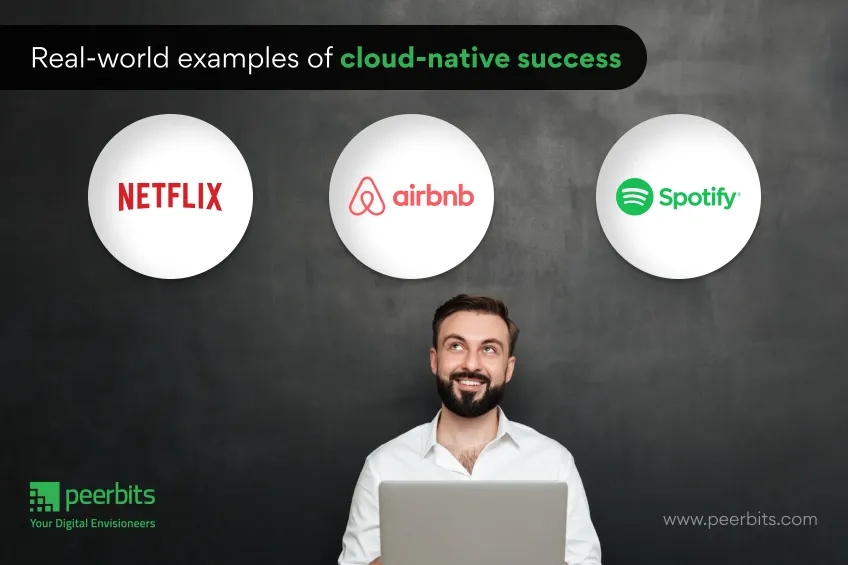
1. Netflix
Challenges: As a global streaming giant, Netflix faced the challenge of delivering high-quality video content to millions of users globally while managing fluctuating demand and ensuring low latency. Meeting these requirements with legacy systems was becoming increasingly challenging.
Cloud-native implementation: Netflix adopted a microservices architecture and took advantage of cloud-native technologies like AWS to build a scalable and resilient platform. With microservices, they were able to deploy updates and features faster, improve fault tolerance, and optimize resource utilization.
Impact: Netflix achieved a 70% reduction in deployment time and a 50% increase in deployment frequency through automation. This helped them to innovate faster, improve user experience, and handle traffic spikes efficiently.
2. Airbnb
Challenges: Airbnb is a popular community marketplace that allows property owners and travelers to connect with each other for renting vacation spaces around the world. Airbnb just after a year of launching wanted to switch to a reliable cloud provider. Their main concerns involved peak booking periods and global expansion.
Cloud-native implementation: Airbnb migrated to a cloud-native architecture based on AWS, helping them to scale their platform rapidly and efficiently. They adopted microservices, containerization, and serverless computing to handle increasing traffic and introduce new features quickly.
Impact: Airbnb achieved a 300% increase in application performance and a 50% reduction in infrastructure costs through cloud-native development. They were able to expand its global footprint and introduce innovative features at a faster pace.
3. Spotify
Challenges: Spotify faced the challenge of delivering high-quality music streaming services to millions of users globally while managing their constantly growing user base & infrastructure.
Cloud-native implementation: Spotify adopted a cloud-native approach, utilizing microservices and containerization to build a scalable and resilient platform. They utilized AWS for their cloud infrastructure and focused on data analytics to optimize user experience.
Impact: Spotify achieved a substantial increase in user engagement and a 40% reduction in infrastructure costs through cloud-native development. They expanded their music library and introduce new features rapidly.
Future trends in cloud-native development
The cloud-native landscape is rapidly evolving. The new advancements are reshaping how applications are developed and deployed. Key trends include:
-
AI/ML Integration: Artificial Intelligence (AI) and Machine Learning (ML) are becoming an integral part to cloud-native development. These technologies enable smarter automation, predictive analytics, and more personalized user experiences. Integrating AI/ML into cloud-native applications allows for real-time data processing, decision-making, and massive innovation at scale.
-
Edge Computing: As the demand for low-latency applications grows, edge computing is emerging as a critical component of cloud-native development. By processing data closer to the source , it reduces latency and bandwidth usage, making it ideal for IoT and real-time applications. The integration of edge computing with cloud-native architectures allows for more distributed, resilient, and efficient systems.
-
Serverless Evolution: Serverless computing continues to evolve, with advancements in Function-as-a-Service (FaaS) and Backend-as-a-Service (BaaS). These technologies are simplifying the development process and reducing operational overhead of applications.
The convergence of these trends will drive the future of cloud-native development, empowering businesses to build more agile, scalable, and innovative applications that can adapt to the dynamic needs of the market.
Conclusion
Cloud-native development is an essential strategy for modern businesses aiming to stay competitive with resilient & scalable applications. With the use of microservices, containerization, CI/CD pipelines, and serverless computing, companies can unleash the power of cloud native apps for their businesses. With the adoption of cloud services & solutions, powered by cloud native practises you can acquire faster innovation that many fail to sustain in this rapidly changing era.
Consider starting with a comprehensive Cloud consultation or training program to get deeper understanding of how cloud-native development can benefit your business needs. You can also stay tuned with our blogs for latest insights into cloud and DevOps services. Its high time you take the first step today and empower your business to flourish in the modern era.


